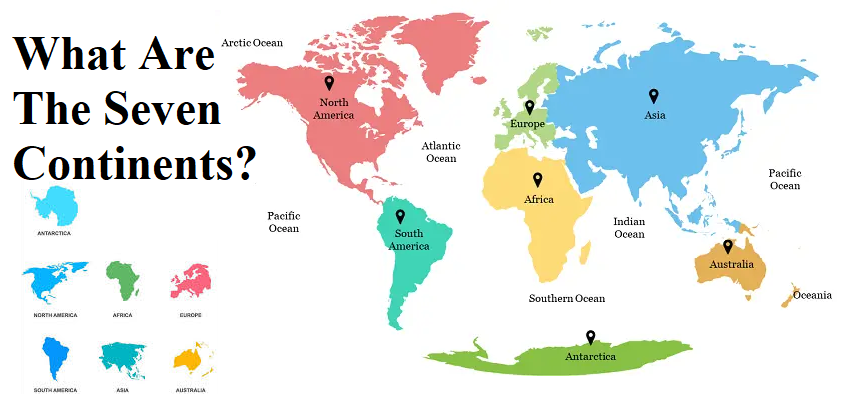The world we live in is vast and diverse, comprising numerous geographical features, cultures, and ecosystems. One of the fundamental ways to understand our planet’s geography is through the concept of continents. Traditionally, there are seven continents, each with its unique characteristics. Let’s explore each of these continents in detail.
1. Africa
Africa is the second-largest continent, covering about 30.2 million square kilometers (11.7 million square miles). It is home to 54 countries, making it the most diverse continent in terms of cultures, languages, and ethnicities. Africa is rich in natural resources, including minerals, forests, and wildlife. Major geographical features include the Sahara Desert, the Nile River (the longest river in the world), and Mount Kilimanjaro, the highest peak in Africa. The continent is known for its diverse ecosystems, from tropical rainforests to savannas and deserts.
2. Antarctica
Antarctica is the southernmost continent, almost entirely covered by ice, making it the coldest place on Earth. It spans about 14 million square kilometers (5.4 million square miles) and is unique because it has no permanent human residents. Instead, temporary research stations are maintained by various countries. The continent plays a crucial role in global climate regulation and is home to unique wildlife, including penguins and seals. Despite its harsh conditions, Antarctica’s glaciers and ice sheets are vital indicators of climate change.
3. Asia
Asia is the largest and most populous continent, covering approximately 44.58 million square kilometers (17.2 million square miles) and home to about 60% of the world’s population. It consists of 49 countries, including some of the largest, such as China and India. Asia is known for its cultural diversity, economic powerhouses, and historical significance. Major geographical features include the Himalayas (the highest mountain range in the world), the Gobi Desert, and the extensive coastlines along the Pacific and Indian Oceans.
4. Europe
Europe is a continent rich in history, culture, and economic development. Covering about 10.18 million square kilometers (3.93 million square miles), it consists of 44 countries, with notable ones including Germany, France, and the United Kingdom. Europe is known for its cultural landmarks, diverse languages, and contributions to art, philosophy, and science. Major geographical features include the Alps, the Danube River, and the Mediterranean Sea. The continent has played a significant role in global affairs, both historically and in modern times.
5. North America
North America spans about 24.7 million square kilometers (9.54 million square miles) and includes countries such as the United States, Canada, and Mexico. The continent is characterized by its diverse landscapes, ranging from the Arctic tundra in the north to tropical climates in the south. Major geographical features include the Rocky Mountains, the Great Lakes, and the Mississippi River. North America is known for its cultural diversity and economic strength, contributing significantly to global trade and politics.
6. Australia (Oceania)
Often referred to as Australia, this continent also includes the Pacific island nations and is sometimes collectively called Oceania. Australia itself covers about 7.69 million square kilometers (2.97 million square miles) and is the smallest continent. Known for its unique wildlife, such as kangaroos and koalas, Australia boasts diverse ecosystems, from deserts to tropical rainforests. The continent’s indigenous cultures, particularly those of Aboriginal peoples, contribute to its rich cultural heritage.
7. South America
South America covers approximately 17.84 million square kilometers (6.89 million square miles) and consists of 12 countries, including Brazil, Argentina, and Colombia. The continent is renowned for its biodiversity, with the Amazon Rainforest being one of the most vital ecosystems on the planet. Major geographical features include the Andes Mountains, the longest mountain range in the world, and the Amazon River, the second-longest river. South America is rich in cultural diversity, with influences from indigenous peoples, European colonization, and African heritage.
Conclusion
The seven continents—Africa, Antarctica, Asia, Europe, North America, Australia (Oceania), and South America—each play a significant role in the planet’s geography, culture, and ecosystems. Understanding these continents enhances our appreciation of the world’s diversity and the interconnectedness of human societies and the environment. Whether through their unique landscapes, rich histories, or cultural legacies, the seven continents are integral to our understanding of Earth and its inhabitants.
Read more :
1= https://rapidurlindexer.net/blogs/what-are-the-primary-colors/
4= https://rapidurlindexer.net/blogs/the-ten-commandments-a-moral-foundation/
5= https://rapidurlindexer.net/blogs/what-are-the-seven-continents/



